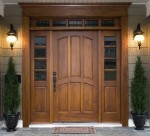 An important tool in the effort to build greener buildings and live greener lives is the selection of products that were made using environmentally friendly processes and are used in environmentally friendly ways.
An important tool in the effort to build greener buildings and live greener lives is the selection of products that were made using environmentally friendly processes and are used in environmentally friendly ways.
Green products are available for just about any daily need, and the ways they are green are many and varied: They are energy or water efficient; they use healthy, non-toxic materials; they are made from recycled or renewable sources; they make current products you use more efficient or more durable; and they are recyclable or biodegradable, among many other things.
But among all the truly green products comes the risk of “greenwashing;” that is, products that are advertised as green without truly offering environmental or health benefits.
The ASID (American Society of Interior Designers) provides the following list of resources on their website www.asid.org. The directories below can help you sort through the claims and find the products that best meet your needs.
1- GrenSpec Directory www.buildinggreen.com
The online GreenSpec® Directory lists product descriptions for over
2,100 environmentally preferable products. Products are chosen to be
listed by BuildingGreen editors. They do not charge for listings orsell
ads.
2- GREEN BUILDING PAGES www.greenbuildingpages.com
Green Building Pages is an online sustainable design and decision-
making tool for building industry professionals and environmentally
and socially responsible consumers.
3- GREEN2GREEN www.green2green.com
Green2Green.org features comprehensive information regarding
green building products, materials and practices. The site offers side-
by-side comparisons of products using a variety of environmental, technical and economic criteria.
4-OIKOS www.oikos.com
Oikos is a World Wide Web site devoted to serving professionals whose
work promotes sustainable design and construction.
5- THE GREEN GUIDE www.thegreenguide.com
National Geographic’s Green Guide offers staff-written reviews of a host
of products, ranging from appliances, home furnishings and home
improvement products to personal care and pet supplies.
6- GOOD TO BE GREEN www.goodtobegreen.com
Good To Be Green is a directory of green building products,
sustainable building materials and green building service providers.
Products must: be made out of recycled materials; ensure a low
environmental impact during the construction, operation and/or
demolition of the building; conserve natural resources like energy,
wood and water; and improve air quality.
 Home trends for 2010? Smaller and more energy-efficient homes. In the past, lots of square footage was most important, but now buyers are looking for a well-designed, energy-efficient home. Members of the National Association of Home Builders were recently given a list of 40 home features and asked to rank which they were likely to include in their new homes and which they weren’t. Results –
Home trends for 2010? Smaller and more energy-efficient homes. In the past, lots of square footage was most important, but now buyers are looking for a well-designed, energy-efficient home. Members of the National Association of Home Builders were recently given a list of 40 home features and asked to rank which they were likely to include in their new homes and which they weren’t. Results –









 Air escapes through every hole and crack in your home. Warm air leaking into your home during the summer and out of your home during the winter can waste a lot of your money. One of the quickest and cheapest dollar saving tasks you can do is caulk, seal, and weather strip all seams, cracks, and openings to the outside.
Air escapes through every hole and crack in your home. Warm air leaking into your home during the summer and out of your home during the winter can waste a lot of your money. One of the quickest and cheapest dollar saving tasks you can do is caulk, seal, and weather strip all seams, cracks, and openings to the outside. 




